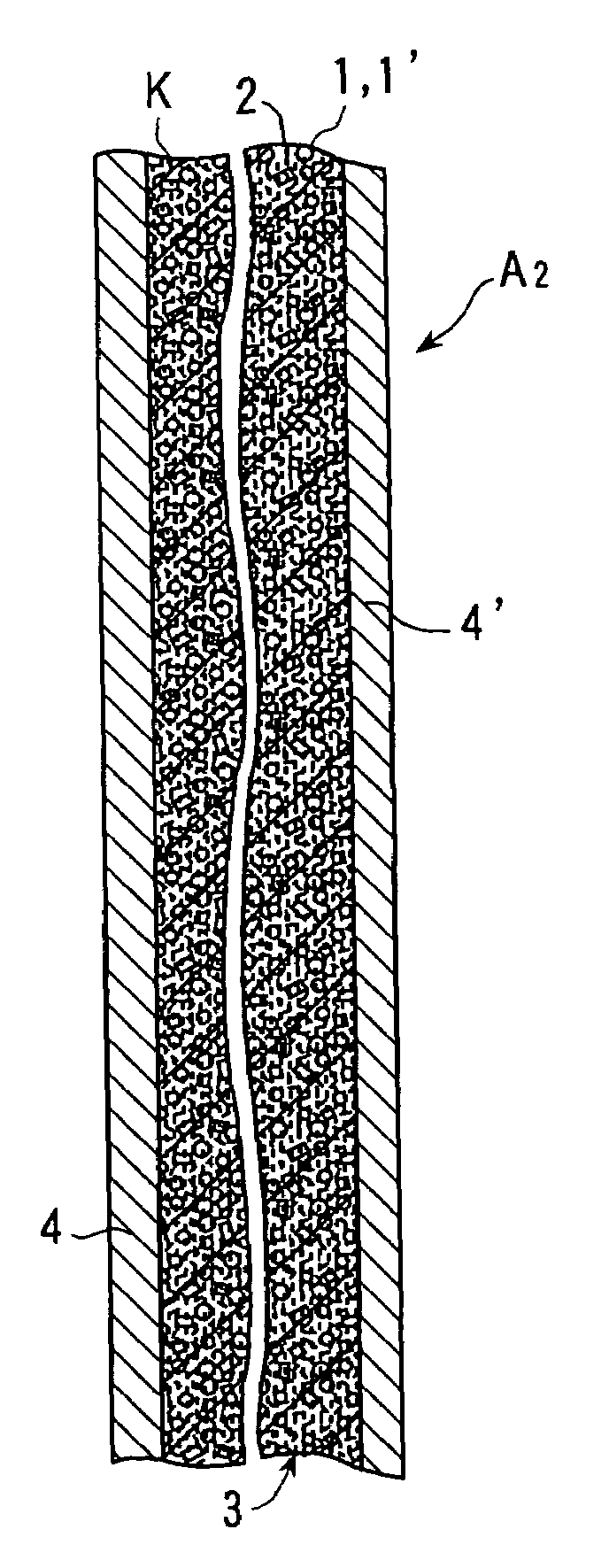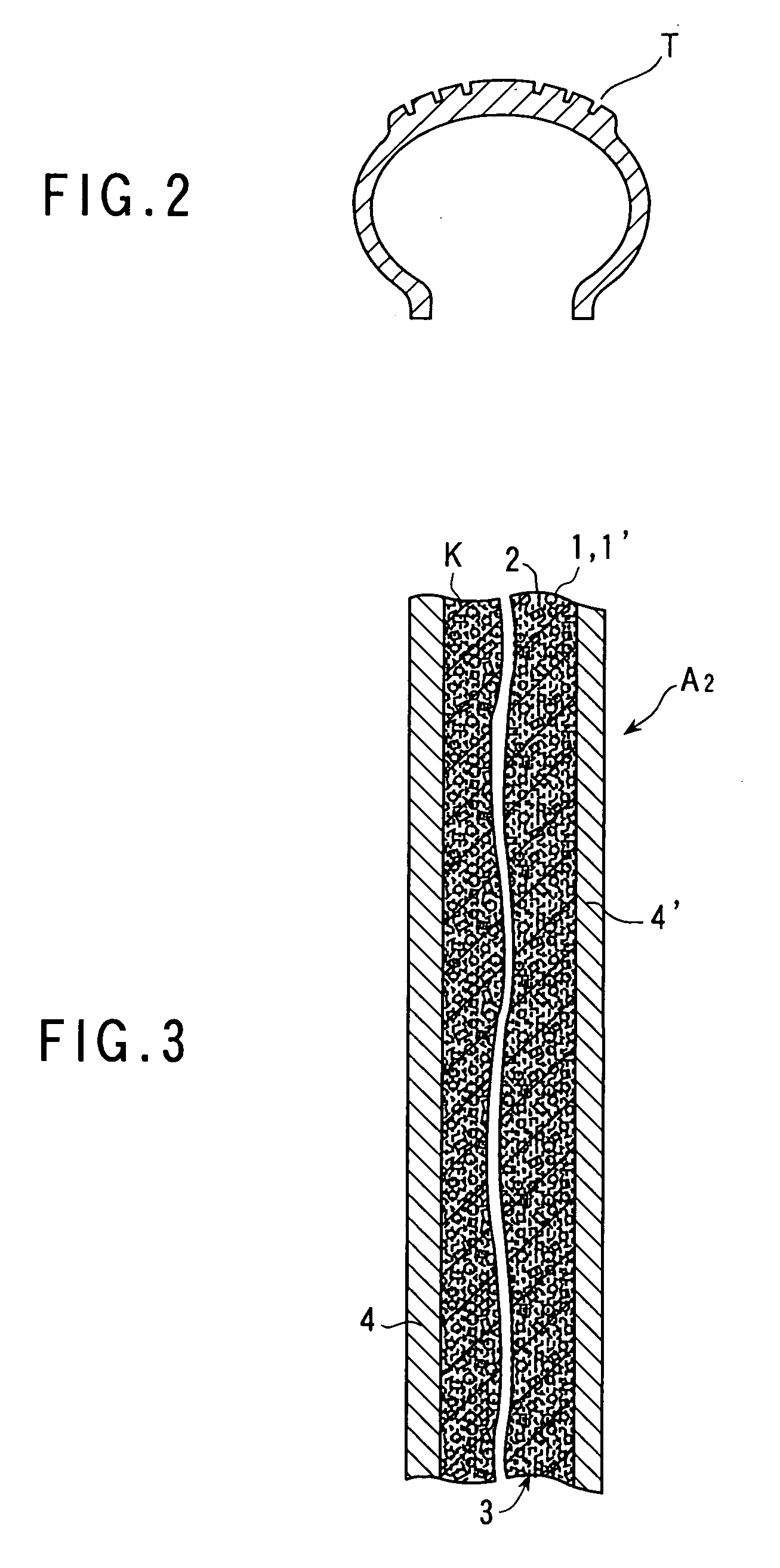Building material formed from recycled resources and installation method thereof
a technology of building materials and recycled resources, applied in the direction of building repairs, sustainable waste treatment, grain treatment, etc., can solve the problems of indoor air pollution occurring in new residential construction, serious problems in the disposal of industrial waste, damage to the health of residents, etc., and achieve the effect of convenient construction and economic viability
- Summary
- Abstract
- Description
- Claims
- Application Information
AI Technical Summary
Benefits of technology
Problems solved by technology
Method used
Image
Examples
Embodiment Construction
[0011]The following is a description of the embodiments of the present invention with reference to the drawings. FIG. 1 illustrates a building material (A1) for wall or ceiling use formed as a unit consisting of laminated structure (3) in the center consisting of activated carbon component (K), that is, a material in powdered form (a degree of latitude is allowed in the coarseness of the material; it may be relatively coarse) obtained by roasting and grinding coffee beans after drinking coffee and drying the resultant coffee grounds or then further roasting and, if necessary, grinding them hardened by the addition of plaster material (2), which is then clad by panel structures (4) and (4′). Here, panel structures (4) and (4′) may be constructed of cardboard, veneer paneling or other material and, if cardboard, cardboard with air permeability is optimal, and, if veneer paneling, holes should be made in the material to provide air permeability. Meanwhile, plaster material (2) is fire ...
PUM
| Property | Measurement | Unit |
|---|---|---|
| adhesive | aaaaa | aaaaa |
| volatile | aaaaa | aaaaa |
| air permeability | aaaaa | aaaaa |
Abstract
Description
Claims
Application Information
 Login to View More
Login to View More - R&D
- Intellectual Property
- Life Sciences
- Materials
- Tech Scout
- Unparalleled Data Quality
- Higher Quality Content
- 60% Fewer Hallucinations
Browse by: Latest US Patents, China's latest patents, Technical Efficacy Thesaurus, Application Domain, Technology Topic, Popular Technical Reports.
© 2025 PatSnap. All rights reserved.Legal|Privacy policy|Modern Slavery Act Transparency Statement|Sitemap|About US| Contact US: help@patsnap.com



